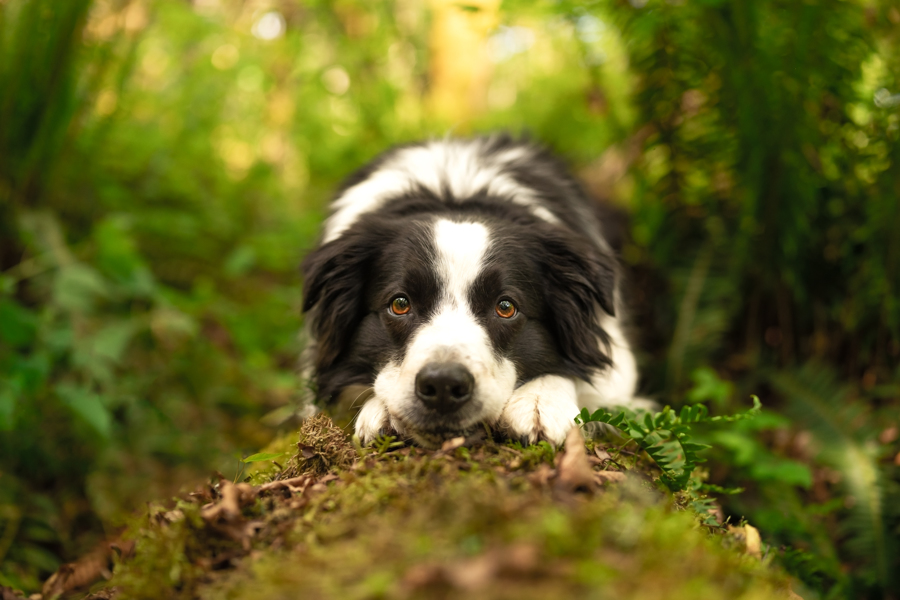Working Detection Dogs Help Conservation Researchers Sniff Out Data
Posted on Categories Discover Magazine

In a dense Salvadoran rainforest, a conservation detection dog named Niffler was engrossed in a peculiar training exercise. Like a determined scavenger hunt participant, his mission was clear: locate carnivore scat samples that his handler, Kayla Fratt, co-founder of K9 Conservationists, had hidden along a trail.
Niffler searched tirelessly for his target, signaling his find by laying in front of the sample, paws and nose framing it on three sides. This critical exercise was not just a game – it was Niffler’s final test to prove he was ready to join Fratt and her team in their upcoming large-scale research effort.
In the fight to save Earth’s flora and fauna, some researchers have found an unexpected, but effective ally: dogs. Equipped with keen noses and unparalleled tracking skills, these four-legged research assistants are revolutionizing data collection.
The Origins of Detection Dogs
(Credit: Kayla Fratt, K9 Conservationists)
Detection dogs made their conservation debut in New Zealand in the 1890s, helping to sniff out kakapo, a critically endangered parrot. Since then, the roles of conservation detection dogs have been expanded and refined to meet the specific needs of researchers.
Conservation efforts hinge on reliable data, especially when tracking elusive flora and fauna. Humans, for the most part, rely on their eyesight, and while we might detect nearby scents, our canine counterparts have a major advantage.
Read More: Dogs Have Co-Evolved With Humans Like No Other Species
Detection dog named Niffler (Credit: Holly Cook, K9 Conservationists)
While humans have roughly six million sensory receptors, dogs boast over 100 million. Some dog breeds, like sheepdogs and beagles, take it to the next level, with over 200 million and 300 million receptors, respectively.
It’s not just receptor numbers that set dogs apart. They also have more receptor types, allowing them to pick up on a wide variety of scents. A section of the canine brain is also responsible for analyzing odors around 40 times larger than that of humans.
Altogether, experts think that dogs’ scent detection ability is 1,000 to 10,000 times stronger than our own. This allows dogs to pick up scents that are virtually undetectable to humans from distances up to a mile and a half away.
What Does a Detection Dog Do?
(Credit: Kayla Fratt, K9 Conservationists)
While all their jobs require sniffing, conservation detection dogs are generally employed for one or more specific tasks.
These working canines can be charged with locating rare, elusive or endangered species. Species with declining populations, like the U.K.’s greater crested newt, can be notoriously difficult to find, especially when they are buried underground or otherwise well-hidden.
Dogs have also proven instrumental in targeting invasive flora and fauna. For instance, zebra mussels are invasive pests that cause significant damage in North American waterways. Detection dogs can sniff out these mussels on boat hulls, allowing inspectors to intervene, eliminating them and curtailing their spread.
Read More: How Cadaver Dogs Sniff Out and Dig Up Decaying History
(Credit: Kayla Fratt, K9 Conservationists)
Another, less invasive role for these canine research assistants is tracking down animal feces. DNA analysis of these smelly treasures can reveal information about an animal’s diet or, if there are enough samples, the status of a population.
Researchers also train these skilled dogs to find dead animals, which is particularly important in assessing the impacts of wind farms on flying species. And lastly, the dogs can find dens, roosts and nests of various species. This provides valuable insight into animal behavior and can identify critical areas that may need protection or special management consideration.
Finding the Right Working Dog
(Credit: Kayla Fratt, K9 Conservationists)
All dogs have a knack for sniffing, but not every canine is cut out for the working dog life – in fact, most dogs aren’t right for the job, explains Fratt.
Though research doesn’t pinpoint a single breed as superior, the bond between handler and dog introduces a layer of personal preference in the selection process.
For Fratt, the first step is to find a dog physically capable of the work. To her, a conservation dog should be able to navigate diverse terrains, be it dense forests or open fields. Dogs with short legs or snouts probably won’t do as well, Fratt explains, and breeds with thick fur can be magnets for ticks and burrs.
“I personally prefer working with dogs that are small enough that I know I can carry them out of the field if I need to,” says Fratt.
Ambassadors for Conservation
(Credit: Kayla Fratt, K9 Conservationists)
As conservation challenges continue to grow, these canines and their humans are paving the way for innovative solutions.
The contributions of detection dogs extend far beyond the data they help to collect, notes Fratt. They are ambassadors for conservation, raising awareness about environmental issues wherever their paws take them.
Read More: Dogs and Their Owners Share Similar Personality Traits